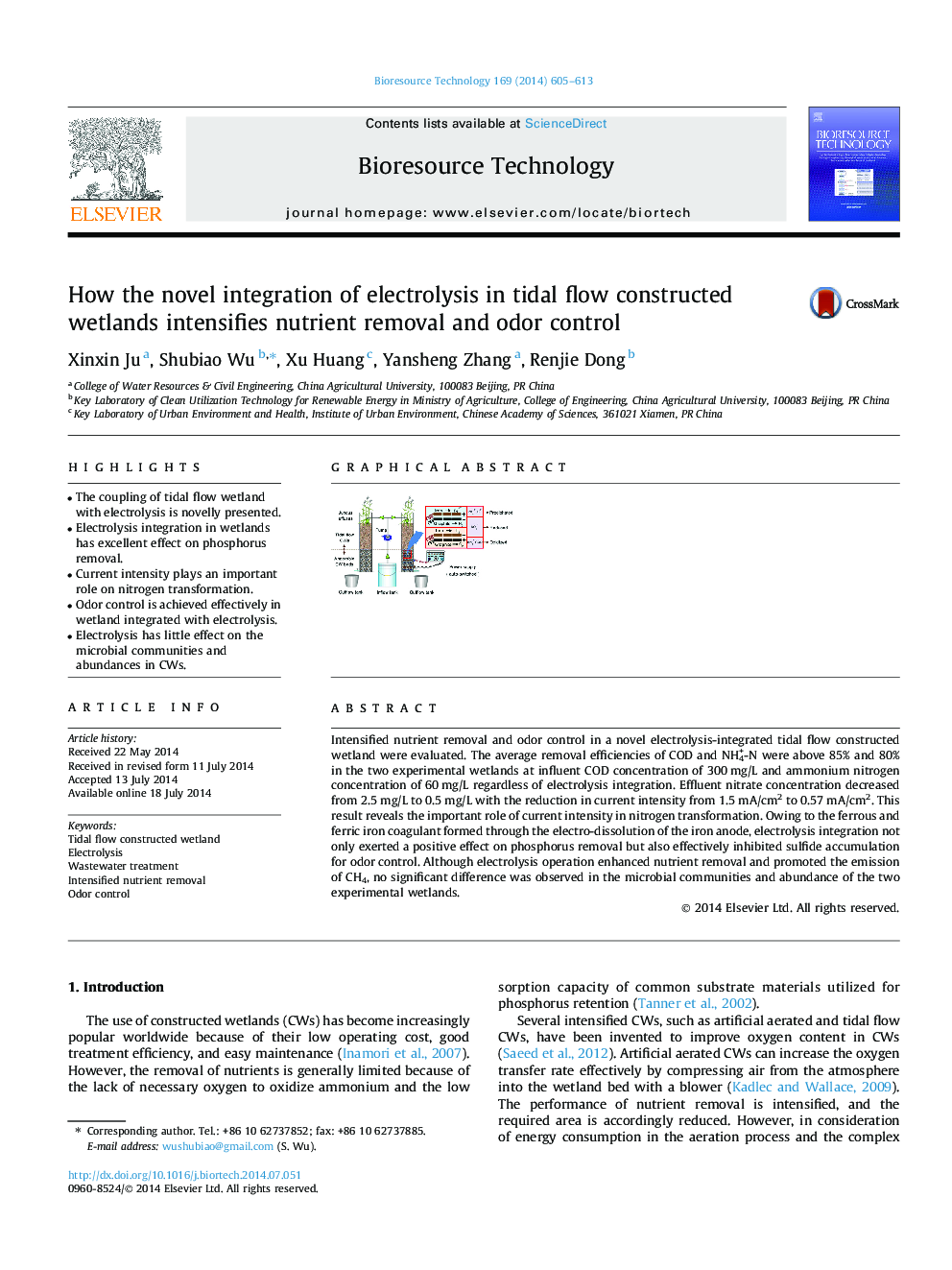| کد مقاله | کد نشریه | سال انتشار | مقاله انگلیسی | نسخه تمام متن |
|---|---|---|---|---|
| 680623 | 1459974 | 2014 | 9 صفحه PDF | دانلود رایگان |
• The coupling of tidal flow wetland with electrolysis is novelly presented.
• Electrolysis integration in wetlands has excellent effect on phosphorus removal.
• Current intensity plays an important role on nitrogen transformation.
• Odor control is achieved effectively in wetland integrated with electrolysis.
• Electrolysis has little effect on the microbial communities and abundances in CWs.
Intensified nutrient removal and odor control in a novel electrolysis-integrated tidal flow constructed wetland were evaluated. The average removal efficiencies of COD and NH4+-N were above 85% and 80% in the two experimental wetlands at influent COD concentration of 300 mg/L and ammonium nitrogen concentration of 60 mg/L regardless of electrolysis integration. Effluent nitrate concentration decreased from 2.5 mg/L to 0.5 mg/L with the reduction in current intensity from 1.5 mA/cm2 to 0.57 mA/cm2. This result reveals the important role of current intensity in nitrogen transformation. Owing to the ferrous and ferric iron coagulant formed through the electro-dissolution of the iron anode, electrolysis integration not only exerted a positive effect on phosphorus removal but also effectively inhibited sulfide accumulation for odor control. Although electrolysis operation enhanced nutrient removal and promoted the emission of CH4, no significant difference was observed in the microbial communities and abundance of the two experimental wetlands.
Figure optionsDownload as PowerPoint slide
Journal: Bioresource Technology - Volume 169, October 2014, Pages 605–613
